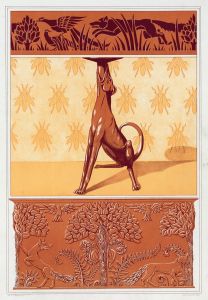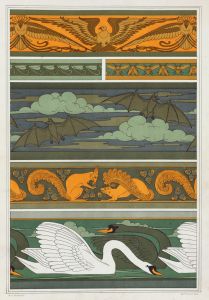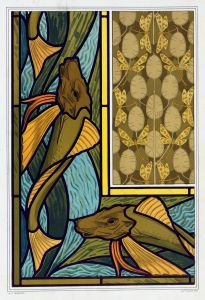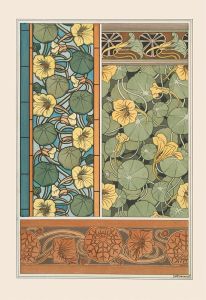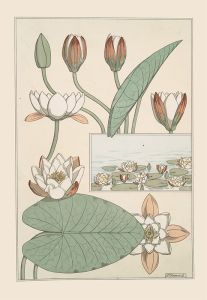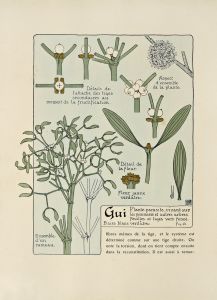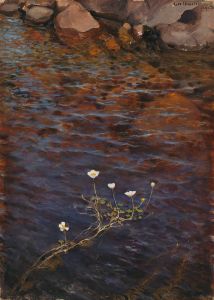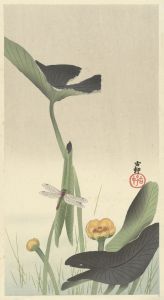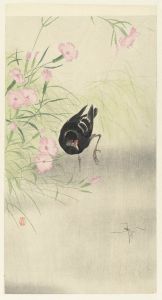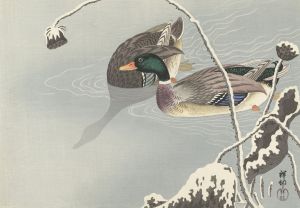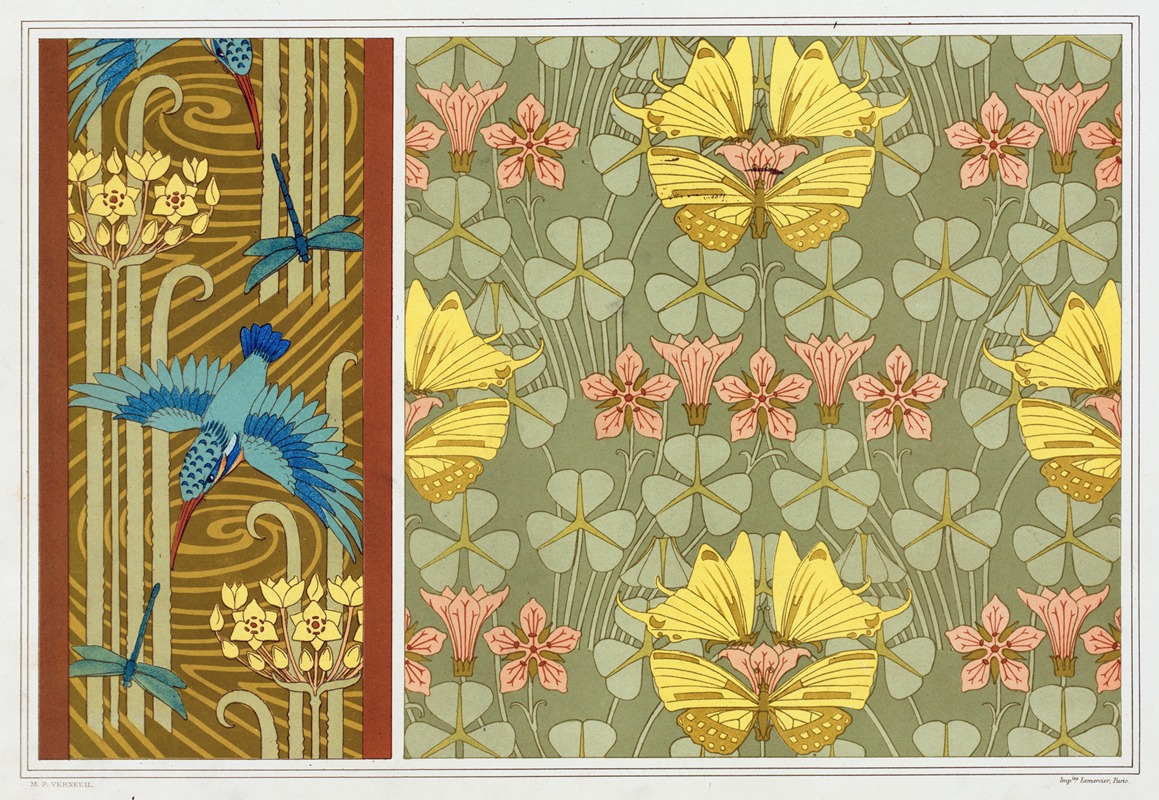
Martins-pêcheurs, libellules et butome en ombrelle, bordures; papillons et oxalide, étoffe
A hand-painted replica of Maurice Pillard Verneuil’s masterpiece Martins-pêcheurs, libellules et butome en ombrelle, bordures; papillons et oxalide, étoffe, meticulously crafted by professional artists to capture the true essence of the original. Each piece is created with museum-quality canvas and rare mineral pigments, carefully painted by experienced artists with delicate brushstrokes and rich, layered colors to perfectly recreate the texture of the original artwork. Unlike machine-printed reproductions, this hand-painted version brings the painting to life, infused with the artist’s emotions and skill in every stroke. Whether for personal collection or home decoration, it instantly elevates the artistic atmosphere of any space.
Maurice Pillard Verneuil was a prominent French artist and designer known for his contributions to the Art Nouveau movement, particularly in the realm of decorative arts. Born in 1869, Verneuil's work often featured intricate patterns and a keen observation of nature, which were hallmarks of the Art Nouveau style. His designs frequently incorporated elements from the natural world, such as plants, animals, and insects, rendered in a stylized and harmonious manner.
One of his notable works is "Martins-pêcheurs, libellules et butome en ombrelle, bordures; papillons et oxalide, étoffe," which translates to "Kingfishers, dragonflies and flowering rush, borders; butterflies and oxalis, fabric." This piece exemplifies Verneuil's skill in blending natural motifs with decorative design, a characteristic feature of his oeuvre. The artwork showcases a rich tapestry of flora and fauna, meticulously arranged to create a visually appealing and balanced composition.
The kingfisher, a bird known for its vibrant plumage and swift movements, is a central motif in this work. Verneuil captures the essence of the kingfisher with vivid colors and dynamic lines, reflecting the bird's natural beauty and grace. Alongside the kingfishers, dragonflies are depicted with delicate wings and elongated bodies, adding a sense of lightness and movement to the piece. The inclusion of the flowering rush, a plant with umbrella-like clusters of pink flowers, provides a botanical element that complements the avian and insect motifs.
In the borders of the design, butterflies and oxalis are featured. Butterflies, with their diverse patterns and colors, symbolize transformation and the ephemeral nature of beauty. Verneuil's depiction of butterflies is both detailed and stylized, capturing their delicate structure while maintaining the decorative quality of the piece. Oxalis, a plant known for its clover-like leaves and small flowers, adds a touch of greenery and further enhances the natural theme.
Verneuil's work is characterized by its attention to detail and the seamless integration of various natural elements into a cohesive design. His ability to transform everyday subjects from nature into decorative art is a testament to his creativity and technical skill. The piece "Martins-pêcheurs, libellules et butome en ombrelle, bordures; papillons et oxalide, étoffe" is a prime example of how Verneuil drew inspiration from the natural world to create art that is both aesthetically pleasing and reflective of the Art Nouveau movement's ideals.
Throughout his career, Verneuil published several influential books and portfolios that disseminated his designs and ideas, contributing to the spread of Art Nouveau aesthetics. His works continue to be appreciated for their artistic merit and historical significance, offering insight into the decorative arts of the late 19th and early 20th centuries. Maurice Pillard Verneuil's legacy endures through his innovative designs and his role in shaping the visual language of his time.







